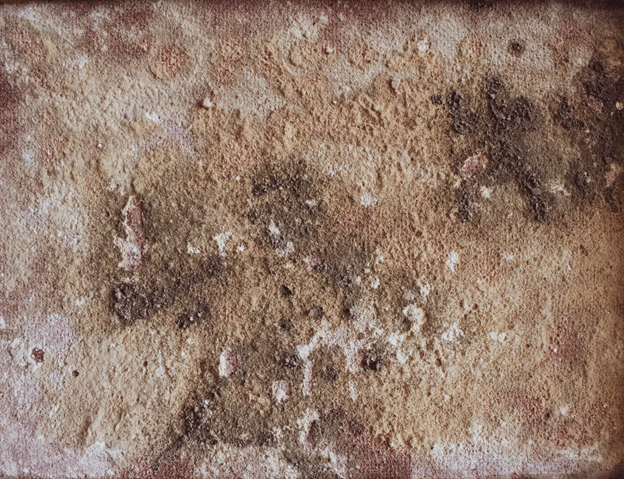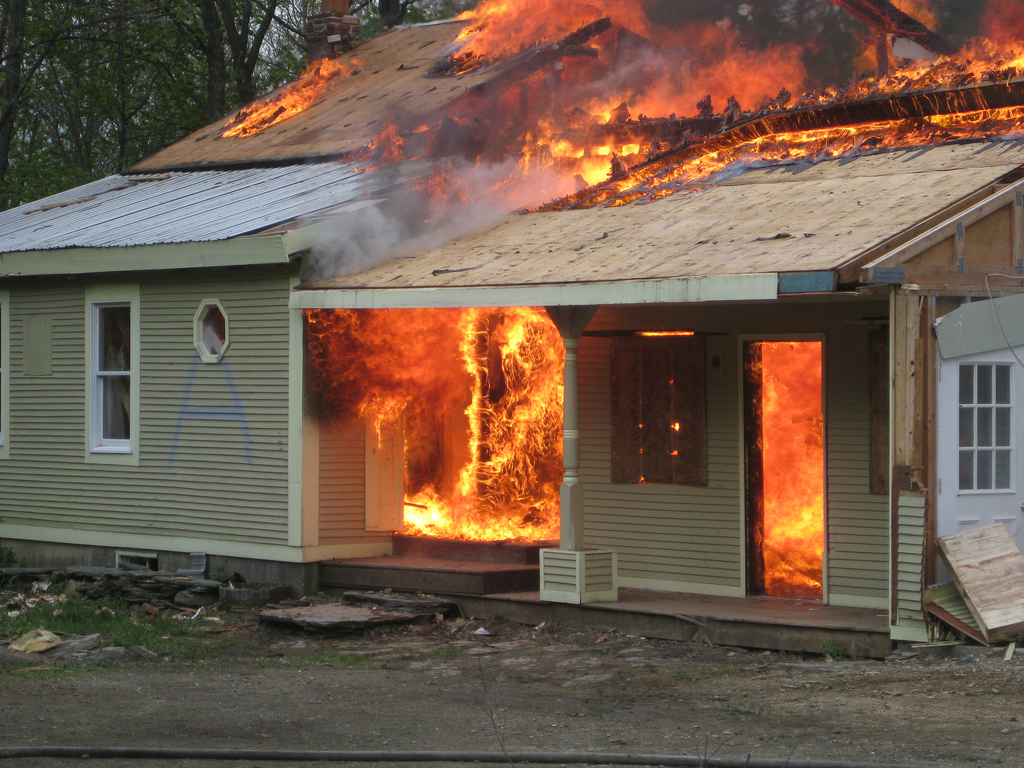10 Types of Mold You Can Find in Your Home

https://unsplash.com/photos/qn586SIQm58
MoldMold is a type of fungus that grows in damp or humid conditi... More. You never want to find it in your home, and when you do, you want to get rid of it as quickly as possible.
Now there are plenty of ways to prevent moldMold is a type of fungus that grows in damp or humid conditi... More from appearing in your house, from continually washing your windows and other surfaces to limiting the amount of moisture in your home. But sometimes, no matter how many preventative measures you take, you end up with moldMold is a type of fungus that grows in damp or humid conditi... More.
And once moldMold is a type of fungus that grows in damp or humid conditi... More takes root in your home, it can be pretty hard to get rid of—even services like power washing aren’t enough to eradicate the problem. You need help from mold removal professionals, using specialized techniques, in order to make sure the job gets done right.
But when it comes to moldMold is a type of fungus that grows in damp or humid conditi... More in your home, it’s important to know what you’re dealing with before getting those professionals involved. Many people fail to realize that there’s no single “type” of moldMold is a type of fungus that grows in damp or humid conditi... More you can find in your home. In fact, dozens of species of moldMold is a type of fungus that grows in damp or humid conditi... More can appear in your home, and many of them can cause serious health hazards and structural damage to both yourself and your home.
So here are ten common types of moldMold is a type of fungus that grows in damp or humid conditi... More you can find in your home.
1: Stachybotrys
This is the big one—you probably know it as “black moldMold is a type of fungus that grows in damp or humid conditi... More” and you do not want to see this in your home. This toxigenic moldMold is a type of fungus that grows in damp or humid conditi... More can cause allergies as well as serious health conditions such as difficulty breathing and depression.
StachybotrysStachybotrys is a type of black mold (often called “black ... More tends to be dark green, or black, in color, with a slimy texture, and usually forms in areas that are damp with high humidityHumidity is the amount of moisture or water vapor present in... More levels. Typically, this moldMold is a type of fungus that grows in damp or humid conditi... More doesn’t just appear out of nowhere, it usually takes weeks of humid, wet conditions for it to begin to grow. It mostly grows on any material that contains large amounts of cellulose, like wood, cardboard, or, yes, drywall (which is 10% cellulose).
Black moldMold is a type of fungus that grows in damp or humid conditi... More is one of the worst molds for your home (and your health), so the moment you suspect you might have spotted some stachybotrysStachybotrys is a type of black mold (often called “black ... More, you should take immediate steps to get it removed from your home.
2: Alternaria
While stachybotrysStachybotrys is a type of black mold (often called “black ... More is one of the most well-known molds, alternaria is likely the most common. Specifically, it’s the most common allergenic moldMold is a type of fungus that grows in damp or humid conditi... More found in the world. It’s a “hairy”-looking moldMold is a type of fungus that grows in damp or humid conditi... More, with a velvety texture and dark green or brown fibers or “hairs” that sprout out.
It’s most often found in the kitchen, since it thrives in damp conditions, and is one of the molds you’ll see growing after suffering water damage to your home. It can spread quickly, so you’ll want to be aggressive in controlling it as it can cause asthma-like symptoms to those exposed to it.
3: Chaetomium
Another moldMold is a type of fungus that grows in damp or humid conditi... More that often grows as the result of water damage (you’ll see a lot of those in this article) is chaetomium. It has a generally fluffy texture, and starts off white before turning brown, and eventually black. If you have a leaking roof or sink, you are likely to encounter this moldMold is a type of fungus that grows in damp or humid conditi... More where the water is allowed to pool, and you’ll be likely to notice it because it has an unpleasant musky smell.
It needs a very consistently moist environment to thrive, so you’ll likely need to take care of any underlying leaks before tackling this moldMold is a type of fungus that grows in damp or humid conditi... More, but once that’s taken care of, you’ll want to get to work—prolonged exposure can leadLead is a heavy metal that can be toxic to humans, especiall... More to skin and nail infections.
4: Penicillin
You might know penicillin as the antibiotic, but water-damaged homes can form the allergenic moldMold is a type of fungus that grows in damp or humid conditi... More that serves as the base of the famous medicine. Unfortunately, when it grows in your home, it doesn’t cure you of bacterial infections. Instead, it can cause terrible respiratory issues for both people and pets in your home.
Penicillin spreads quickly, and can be found in ducts, carpets, mattresses, and wallpaper. Not surprisingly, it tends to thrive in moist areas and is usually a bluish-green color with a velvety texture. Prolonged exposure can cause lung inflammation and asthma, or even chronic sinusitis, so if you see this noticeable moldMold is a type of fungus that grows in damp or humid conditi... More in your home, you’ll want to take fast action.
5: Ulocladium
Another moldMold is a type of fungus that grows in damp or humid conditi... More to expect in the presence of severe water damage is ulocladium, a black moldMold is a type of fungus that grows in damp or humid conditi... More that can easily be confused for other types. It tends to sprout around kitchens, bathrooms, basements, and leaky windows, and while it poses some potential health hazards, it mostly serves as a warning sign that there is water damage in your home that could potentially attract more severe types of moldMold is a type of fungus that grows in damp or humid conditi... More.
6: Acremonium
Acremonium is an interesting moldMold is a type of fungus that grows in damp or humid conditi... More because its appearance changes the longer it’s left untreated. It can be pink, grey, orange or white, and starts off as a moist moldMold is a type of fungus that grows in damp or humid conditi... More that dries out and turns into a powdery substance.
It’s typically found in drain pans, humidifiers, cooling drains, and window sealants, and while it’s not as common as some of these molds, it is something to be mindful of. In fact, it’s a carcinogen that can leadLead is a heavy metal that can be toxic to humans, especiall... More to diseases to bone marrow, organs, and the immune system, and it could leadLead is a heavy metal that can be toxic to humans, especiall... More to impaired brain function.
Thankfully, this moldMold is a type of fungus that grows in damp or humid conditi... More is not as easily spread as many on this list, but it should be removed as soon as possible if discovered.
7: Aspergillus
Aspergillus is a common moldMold is a type of fungus that grows in damp or humid conditi... More that appears in households everywhere but considering that there are over 185 different species of this particular moldMold is a type of fungus that grows in damp or humid conditi... More, there are many colors it may present itself with. Its sporesSpores are microscopic reproductive units of fungi or mold t... More are long and flask shaped, making “walls” of the moldMold is a type of fungus that grows in damp or humid conditi... More.
Most species of aspergillus are not overly toxic, but some could cause respiratory inflammation and lung infectionInfection is the invasion and multiplication of harmful micr... More, so it’s better to be safe than sorry if you think you see this moldMold is a type of fungus that grows in damp or humid conditi... More in your home.
8: Cladosporium
Unlike most molds, cladosporium has the relatively unique ability to grow in both cold and warm climates. It thrives in fabrics, like carpeting or upholstery, though you can also find it inside cupboards or under floorboards.
It tends to be an olive color, or a light brown with a suede texture. It’s not considered to be toxic, though it can cause lung or skin irritation. Either way, its ability to thrive throughout the year in all climates provides plenty of reason to keep an eye out for this moldMold is a type of fungus that grows in damp or humid conditi... More.
9: Fusarium
Like cladosporium, fusarium can grow at colder temperatures (most molds thrive in both high-moisture and warm conditions). It grows largely in carpeting, wallpaper, and fabrics, and can even spread in the winter months.
Fusarium usually appears pink, white, or red in color, and can also naturally grow on compost and various food products. But if you see it in your home, you should take care of it—it can cause skin infections, runny noses, sore throats, itchy eyes, and even more severe symptoms with prolonged exposure.
10: Aureobasidium
If you find a pink, brown or black moldMold is a type of fungus that grows in damp or humid conditi... More behind your walls, or on painted surfaces, you’re likely dealing with aureobasidium. When touched, it can cause skin rashes, but it’s primarily an allergenic moldMold is a type of fungus that grows in damp or humid conditi... More (meaning it’s not as “toxic” as many of the others on this list).
There are still dozens, if not hundreds, of other types of molds out there, and while some are relatively harmless, the presence of any moldMold is a type of fungus that grows in damp or humid conditi... More likely is a sign that you have damp, wet areas in your home that can grow all sorts of molds—including ones that can negatively impact your health and your home.
So it doesn’t matter if you think you’ve spotted alternaria or fusarium, the moment you find moldMold is a type of fungus that grows in damp or humid conditi... More in your home, you should contact the professionals to make your home as good as new once again.












